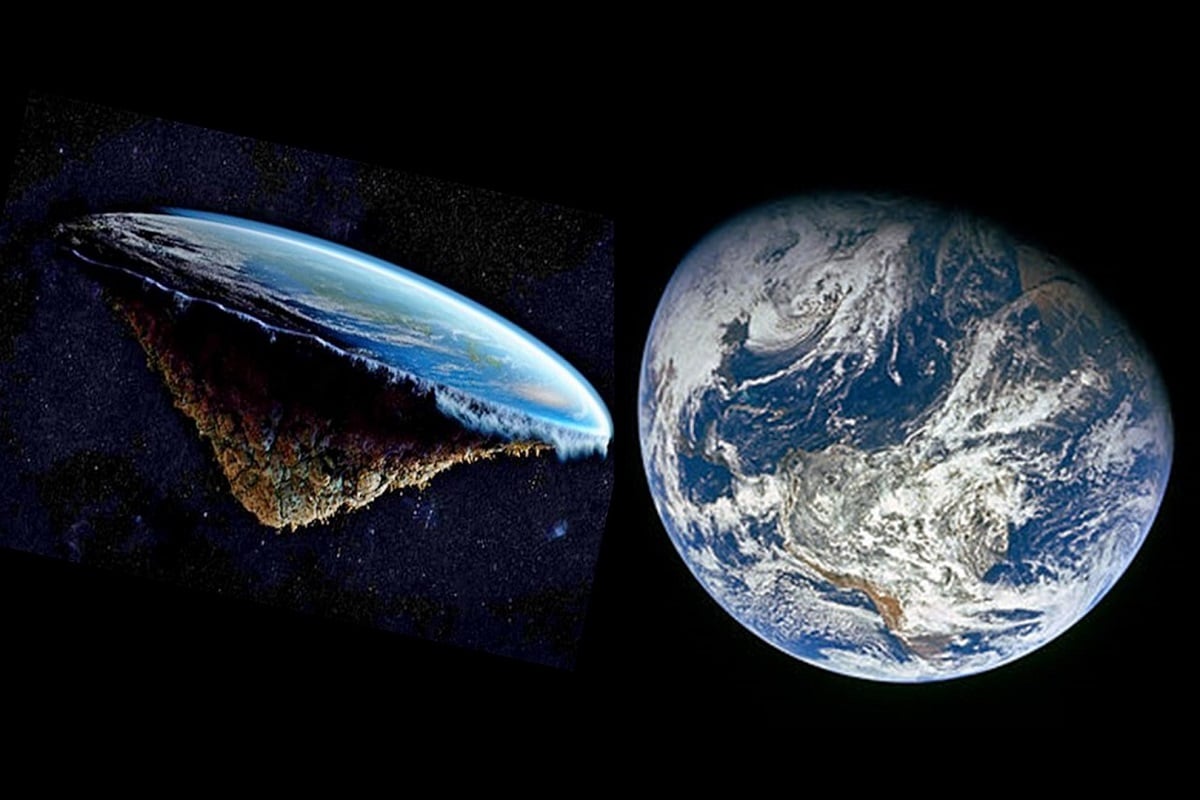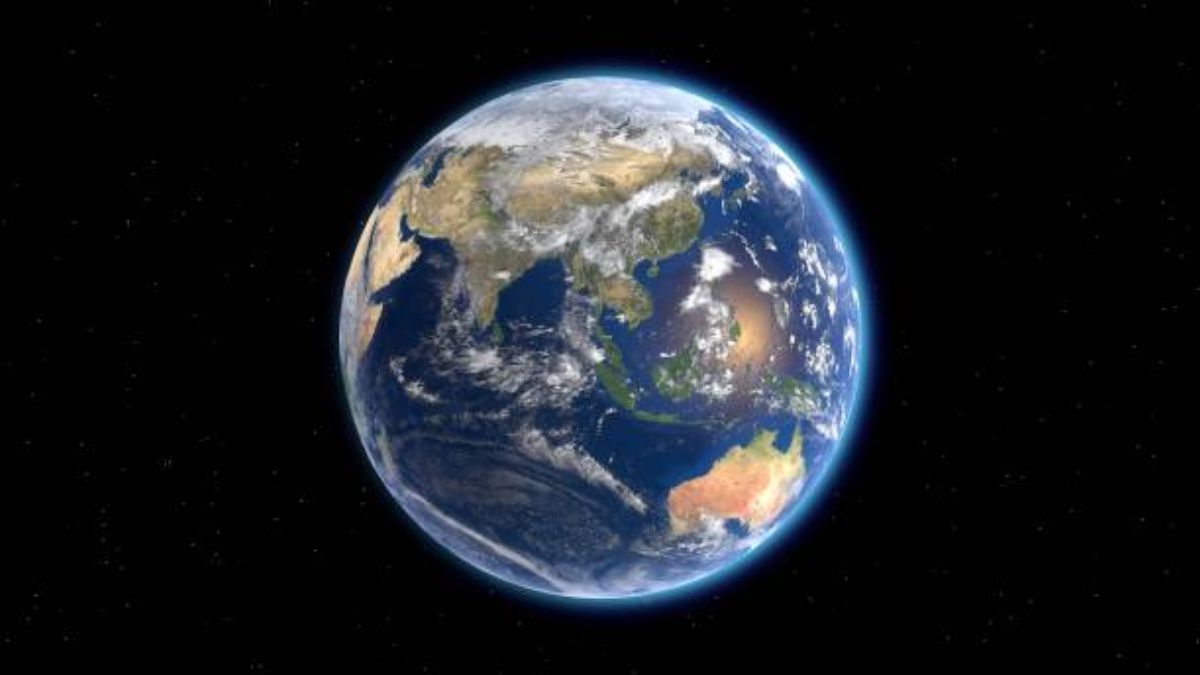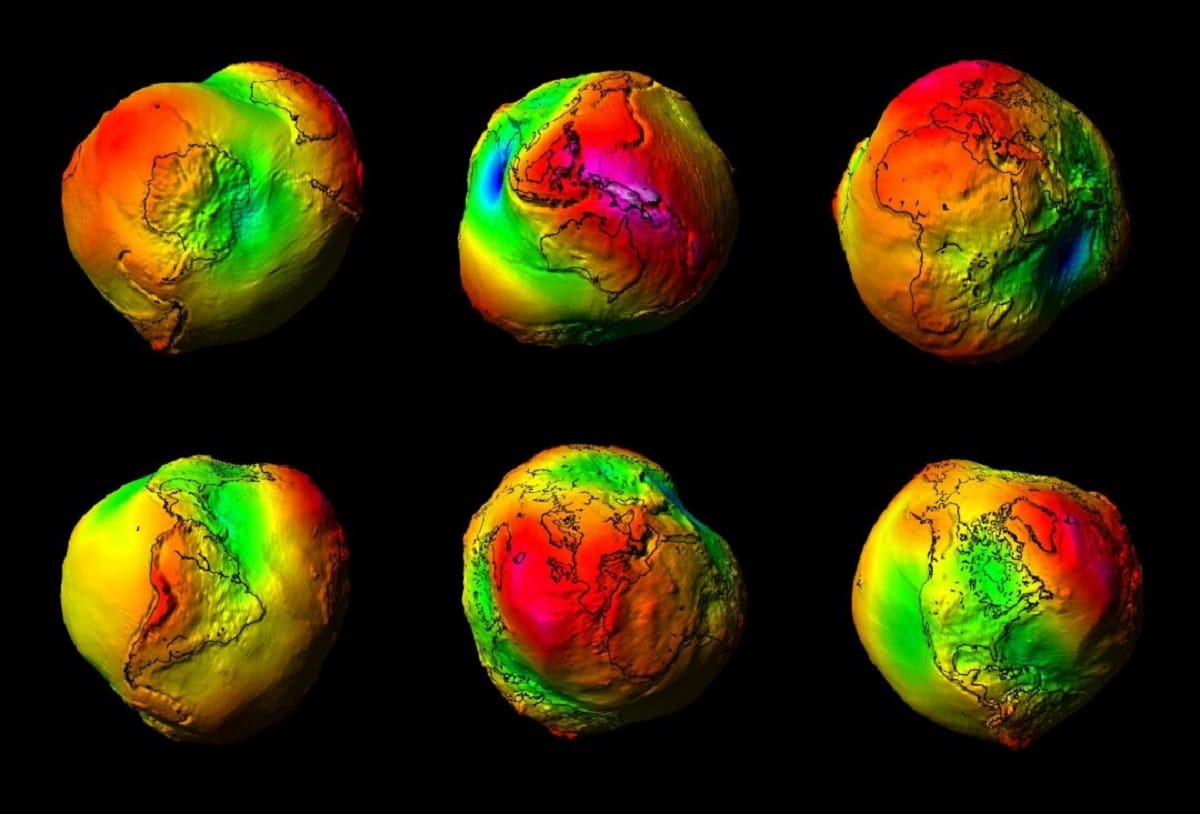
Both in textbooks and in the images of the time man, our planet appears with a circular shape. However, this is not entirely so. The actual shape of the earth is different. Many people wonder what the actual shape of the Earth is.
For this reason, we are going to dedicate this article to telling you what the real shape of the Earth is, its characteristics and why it is drawn that way.
actual shape of the earth

Although it may seem surprising, the Earth is not perfectly round, but rather flattened at the poles and bulging at the equator. This shape is known as a geoid and is due to the combination of several factors., such as the rotation of the Earth on its own axis, the gravitational force and the distribution of the Earth's mass. In other words, the shape of the Earth is affected by its own gravity and the distribution of its mass.
To understand this better, imagine that the Earth is a ball of plasticine spinning on its own axis. Due to the force of the rotation, the clay moves outward at the equator, while at the poles it flattens out a bit.
However, Although the Earth is not perfectly round, its shape resembles an imperfect sphere. For this reason, for many years it was believed that the Earth was a perfect sphere. It was not until a few centuries ago that scientists began to study the shape of the Earth in more detail and discovered that it was flattened at the poles and bulging at the equator.
New discoveries

The mass that makes up the Earth is not uniform. The difference is marked by thicker or thinner ice sheets, groundwater flow, slow magma flow at depth, and many more geographic variables. Since its mass is not uniform, its gravitational field is not uniform either. The differences are very small, less than 1% between the most extreme points.. The comprehensive measurements were taken by a NASA mission named after a woman, GRACE (Spanish for Gravity Recovery and Climate Experiment). GRACE's first work was an exaggerated map of Earth's inhomogeneous gravitational field: a deeply sunken colored sphere in India.
The actual shape of the earth is similar to a potato. The European Space Agency (ESA) has cleverly shown us what a gravitational map of Earth would look like in a video simulation. To do this, they relied on data collected from the Gravity Field and Steady State Ocean Circulation Explorer (GOCE). This is ESA's five meter long Arrowhead probe, which has been circling in low-Earth orbit for almost two years. Its main function is to collect data on the planet's gravitational field to analyze how it works on a global scale.
As explained by the research team responsible for GOCE, the earth is actually a geoid. You could say that our planet has a surface that if you put a marble anywhere, it stays there instead of rolling. Another definition, perhaps more precise, although more technical, is that the shape of the geoid is all its regions where the gravitational field is vertical. If we could walk on a large scale on the geoid, we would see that gravity always points straight down. Although its weight is not necessarily the same at all points. Gravity is not the same everywhere.
Commonly, there are misunderstandings about two multivariate calculus concepts that are often confused: vector fields and their potentials. In this particular case, the vector field is the gravitational field and the potential energy is gravitational potential energy. The latter can be interpreted as gravitational energy in units of mass. Thus, although the gravitational field does not vary in any region of the geoid, that is, it always pulls in the same direction, the gravitational potential can vary. In this way, your weight can vary slightly from one area to another.
Gravity is not the same all over the Earth

The Earth is a geoid for several reasons. One of them is the one that tells us that the poles are flattened by centrifugal force. But as we have seen, Earth is not a perfect ellipsoid either, as different landforms undulate along its surface.
Mountains and valleys are asymmetrical rock formations with two straight thrusts. The first is that an uneven distribution of mass affects gravity. The second is, therefore, that it turns the Earth into an asymmetrically distributed sphere, that is, it turns the Earth into a geoid.
Another factor that is overlooked when considering the shape of the Earth is that most of the Earth's surface is covered by water. Although we do not fully understand the bottom of the sea, we do know that it is also made of landforms. Also, the oceans are not equal, and although "sea level" is known as an accurate measure for all regions, water levels are not the same all over the world, because salinity is not the same in all oceans.
Earth's geoid is not the true shape of our planet, nor what it would look like if we removed the oceans. It is a representation of the equipotential surface of the Earth, or the same surface where gravity is vertical at all points (which is why the marble does not roll because it only experiences downward acceleration), independent of other factors.
Most importantly, in photos from studies of the actual shape of the Earth, valleys and hills are exaggerated (in height or depth) by a factor of 7000 compared to reality. Unlike the ground, where the difference between the highest point (Everest 8.848 meters) and the lowest point (Dead Sea -429 meters) is considerable, the geoid varies from -106 to 85 meters, with only 200 meters of unevenness.
I hope that with this information you can learn more about the real shape of the Earth and its characteristics.